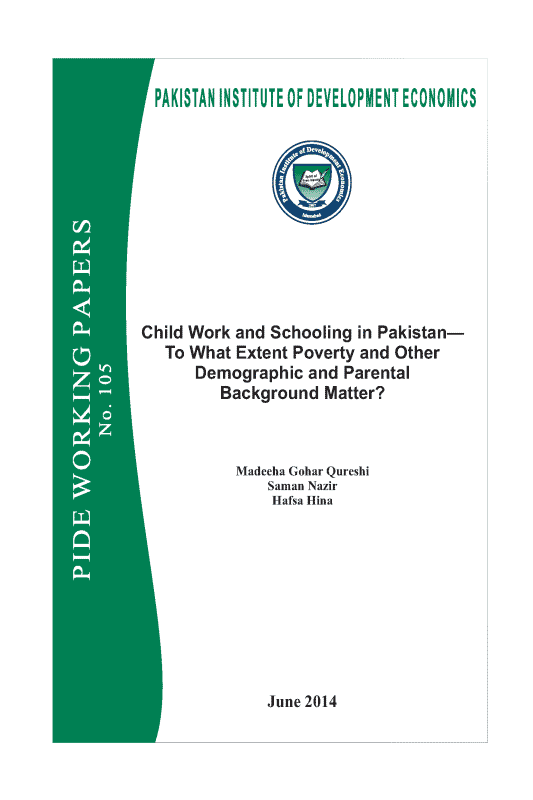
Pakistan Institute of Development Economics
- Home
Our Portals
MenuMenuMenuMenuMenuMenuMenu - ResearchMenuMenuMenuMenuMenuMenuMenu
- Discourse
- The PDR
- Our Researchers
- Academics
- Degree Verification
- Thesis Portal
- Our Portals
Child Work and Schooling in Pakistan – To What Extent Poverty and Other Demographic and Parental Background Matter?
Keeping into consideration the far-reaching social and economic impact of child work both for the children involved and society as a whole, in this study an attempt has been made to disentangle the child employment and schooling tradeoff with perspective to understand the effect of income deprivation measures and other non-income factors such as demographic and parental background information for Pakistan using Pakistan Panel Household Survey 2010 data set. At one level this research resolves empirically the debate that exist in literature whether child work is direct outcome of poverty or not in context of Pakistan through assessing the impact of the poverty channel for both likelihood of sending a child for paid work versus probability of enrolling a child into school and on other tries to connect the above line of reasoning with other non-income channels so as to build more enriching perspective. The consequences of household socioeconomic level in terms of its poor or non-poor status on child employment and child enrollment likelihood functions is assessed using both a direct measure of poverty based on household consumption expenditure information and also indirect measures based on access (or lack of it to be more specific) of household to electricity, sewerage system and to type of housing in terms of number of rooms and durability of house. In our empirical evidence, we do find strong support for poverty channel both directly and indirectly acting as defining force in decreasing his or her probability for school enrollment. However in context of effect of poverty on probability of child employment we do not find strong evidence through direct measure of poverty based on household consumption information, however the indirect proxies of poverty level of the household as child belonging to poor status in terms of access to certain type of living [living in house with no electricity, kaccha type of house (not bricked and hence vulnerable to fall), no sewerage system and with just one room] do provide strong evidence in support of poverty channel of impact on increasing the chances of child work. Further demographic information whether it is in form of increasing sibling size or impact of number of adult earners or parental background variables such as employment status of parents and their employment categories provides support for the significance of how being resource poor can be a binding constraint for the household and can act as an impetus to send a child towards paid work against schooling.



